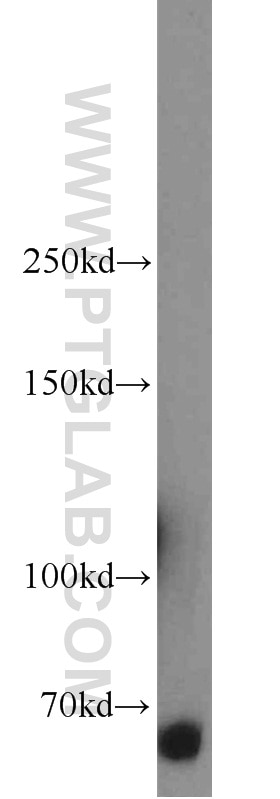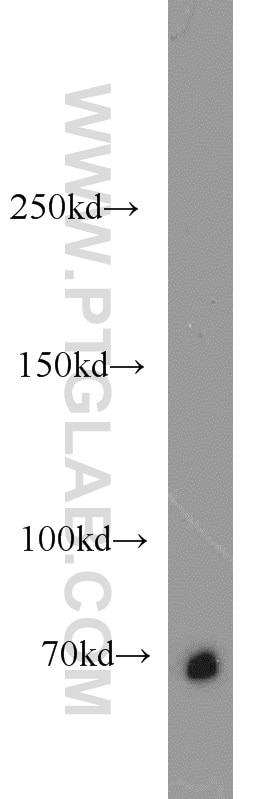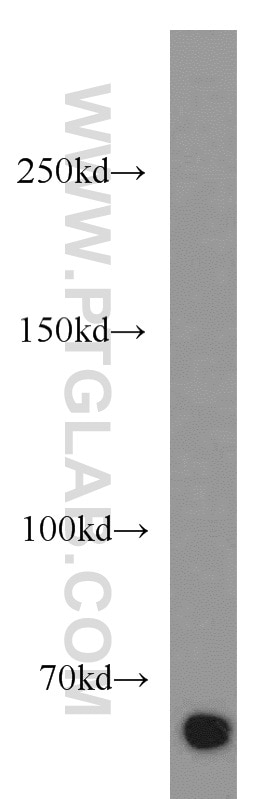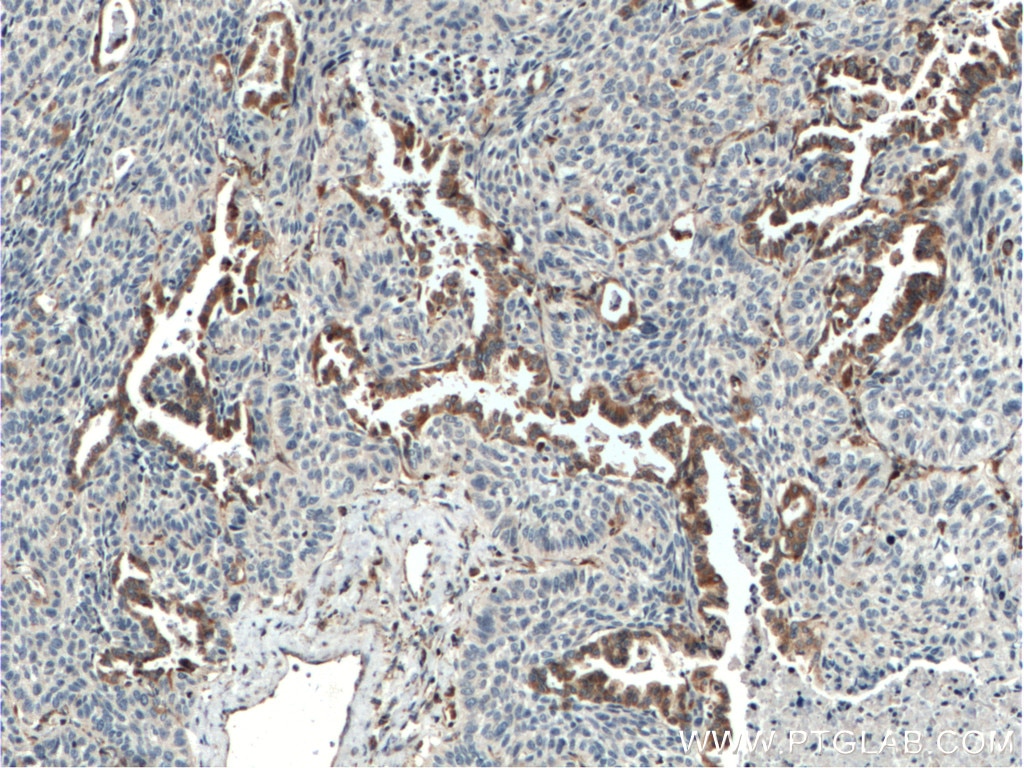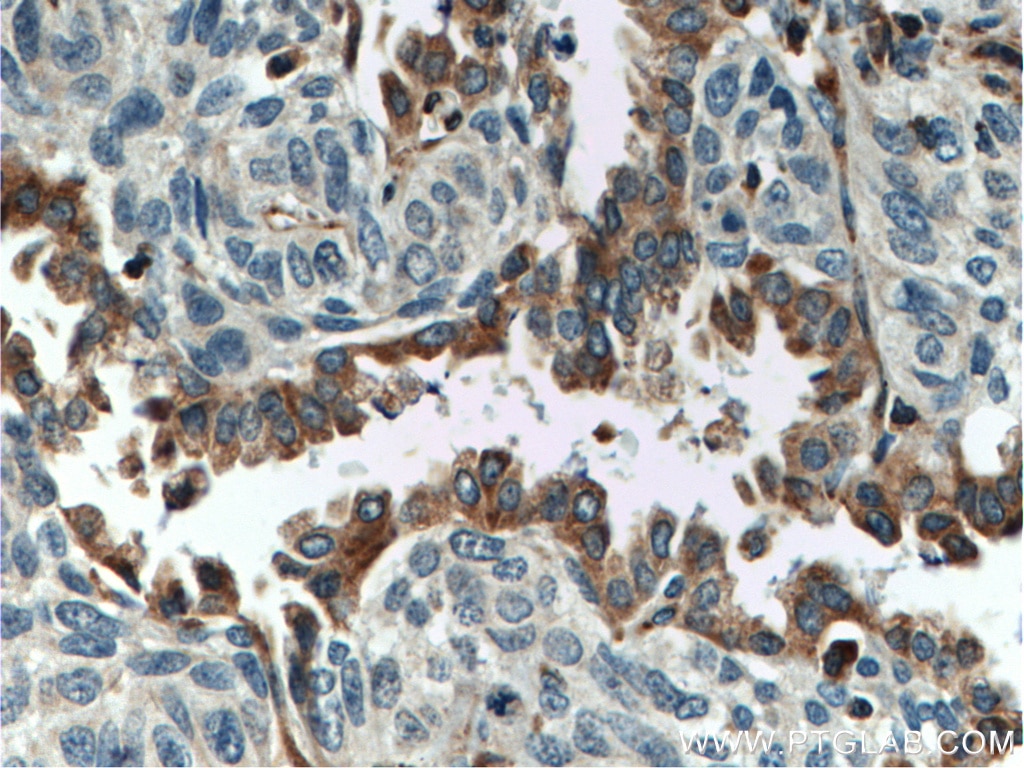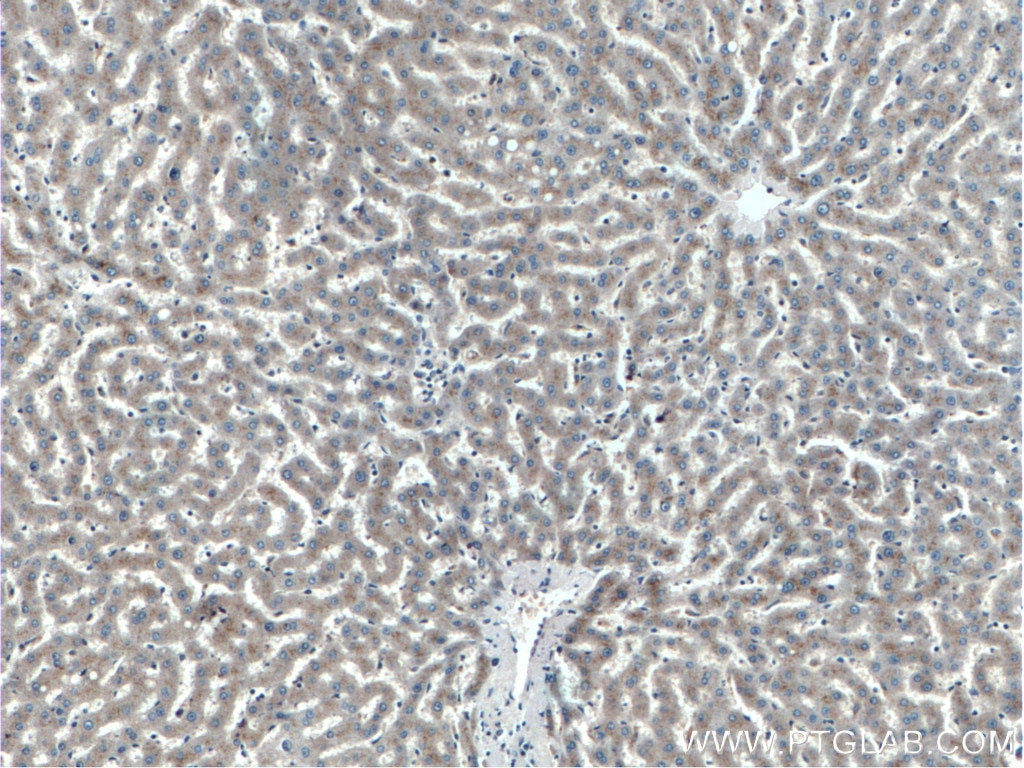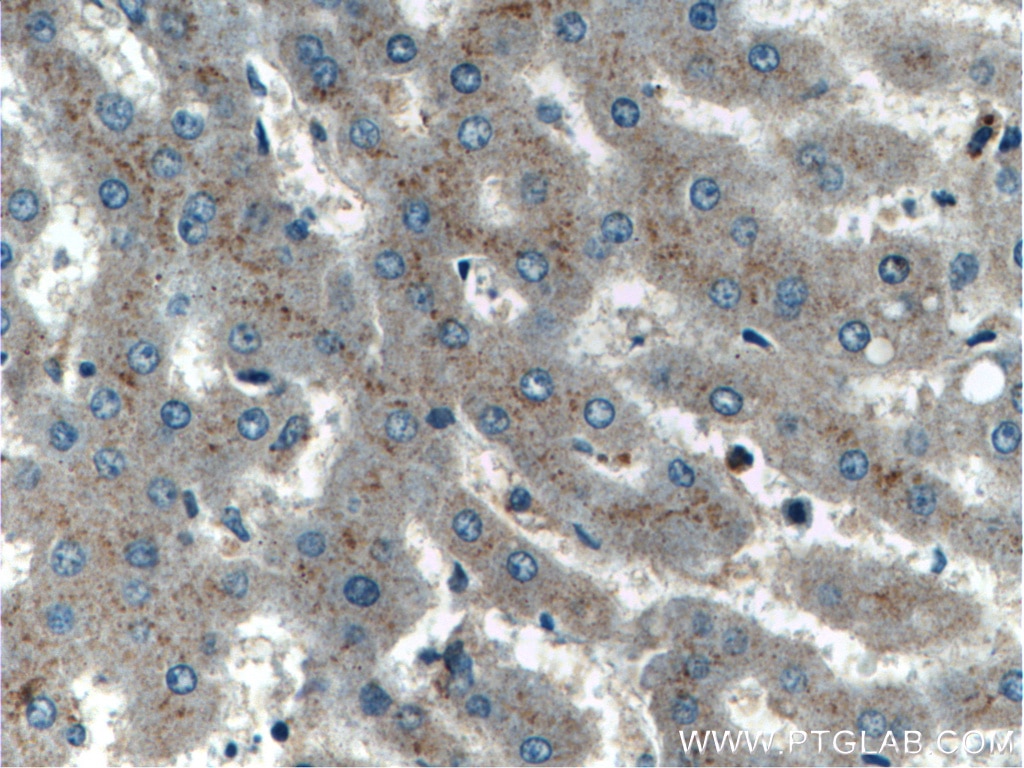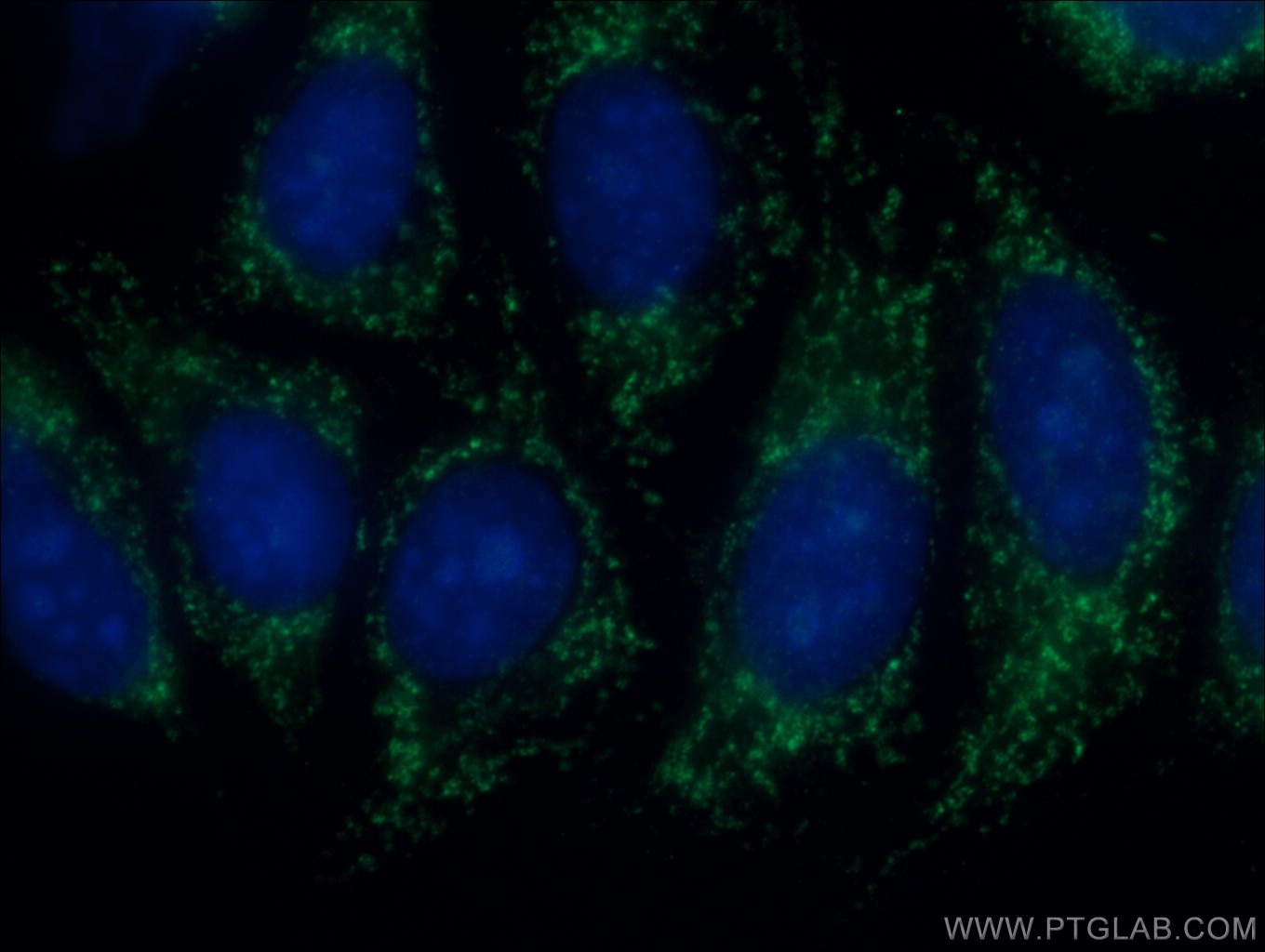Tested Applications
| Positive WB detected in | K-562 cells, A549 cells, mouse thymus tissue |
| Positive IHC detected in | human lung cancer tissue, human liver tissue Note: suggested antigen retrieval with TE buffer pH 9.0; (*) Alternatively, antigen retrieval may be performed with citrate buffer pH 6.0 |
| Positive IF/ICC detected in | HepG2 cells |
Recommended dilution
| Application | Dilution |
|---|---|
| Western Blot (WB) | WB : 1:500-1:1000 |
| Immunohistochemistry (IHC) | IHC : 1:50-1:500 |
| Immunofluorescence (IF)/ICC | IF/ICC : 1:20-1:200 |
| It is recommended that this reagent should be titrated in each testing system to obtain optimal results. | |
| Sample-dependent, Check data in validation data gallery. | |
Product Information
14637-1-AP targets ERAP2 in WB, IF, IHC, ELISA applications and shows reactivity with human, mouse samples.
| Tested Reactivity | human, mouse |
| Host / Isotype | Rabbit / IgG |
| Class | Polyclonal |
| Type | Antibody |
| Immunogen |
CatNo: Ag6216 Product name: Recombinant human ERAP2 protein Source: e coli.-derived, PGEX-4T Tag: GST Domain: 580-915 aa of BC065240 Sequence: VDSNGYYIVHYEGHGWDQLITQLNQNHTLLRPKDRVGLIHDVFQLVGAGRLTLDKALDMTYYLQHETSSPALLEGLSYLESFYHMMDRRNISDISENLKRYLLQYFKPVIDRQSWSDKGSVWDRMLRSALLKLACDLNHAPCIQKAAELFSQWMESSGKLNIPTDVLKIVYSVGAQTTAGWNYLLEQYELSMSSAEQNKILYALSTSKHQEKLLKLIELGMEGKVIKTQNLAALLHAIARRPKGQQLAWDFVRENWTHLLKKFDLGSYDIRMIISGTTAHFSSKDKLQEVKLFFESLEAQGSHLDIFQTVLETITKNIKWLEKNLPTLRTWLMVNT Predict reactive species |
| Full Name | endoplasmic reticulum aminopeptidase 2 |
| Calculated Molecular Weight | 110 kDa |
| Observed Molecular Weight | 61-65 kDa |
| GenBank Accession Number | BC065240 |
| Gene Symbol | ERAP2 |
| Gene ID (NCBI) | 64167 |
| Conjugate | Unconjugated |
| Form | Liquid |
| Purification Method | Antigen affinity purification |
| UNIPROT ID | Q6P179 |
| Storage Buffer | PBS with 0.02% sodium azide and 50% glycerol, pH 7.3. |
| Storage Conditions | Store at -20°C. Stable for one year after shipment. Aliquoting is unnecessary for -20oC storage. 20ul sizes contain 0.1% BSA. |
Background Information
ERAP2(Endoplasmic reticulum aminopeptidase 2) is also named as LRAP(Leukocyte-derived arginine aminopeptidase) and belongs to the peptidase M1 family. It plays a central role in peptide trimming, a step required for the generation of most HLA class I-binding peptides. It can form heterodimers with ERAP1(PMID:15908954). It has 4 isoforms produced by alternative splicing. And defects in the expression of this gene may cause improper antigen processing, possibly leading to favor tumor escape from the immune surveillance.

